THE BROTHERHOOD’S ADVICE TO YOUTH, “TOTAL DENIAL”
The Brotherhood’s plan – as stated by Talal Al Ansary – was if accused, deny all charges and disavow any connection to the group. In parallel, the Brotherhood was to adopt a big legal and media campaign to defend its convicts. Al Ansary says, “With the trial date due, Al Ansary told his son that he had hired the famous lawyer Ibrahim Talaat to represent him. The Brotherhood had also spared no effort or expense to build a good defense led by prominent Brotherhood lawyer, Abdalla Rashwan. Rashwan ordered the team of lawyers to deny all charges and denounce allegations of conspiring for a coup. They are to insist that the trial was but a conspiracy from power hungry officials to smear the name of the Brotherhood. Yet, years later Al Ansary became a lawyer himself and admitted that he was given a very flimisy legal defense that actually made light of the judiciary system. This time, they could not convince the judges with their conspiracy theories because it was obvious for anyone who read the documents or even followed events that there was, in fact, a secret organization with a track record.[1]
FORMING & BACKING AFGHAN ARABS:
The Brotherhood had a big role in the formation of the “Afghan Arabs” phenomena, the basis of what is now known as Al Qaeda. After 1982, the then fugitive Mahdy Akef who was in charge of contact with the west, reached an agreement with the Americans. The deal was for the Muslim Brotherhood to help the United States in evacuating the Soviets out of Afghanistan. To return the favor, the United States will help facilitate the establishment of centers throughout Europe that secretly belong to the Brotherhood. Although the Brotherhood publicly denounced the terrorist operations performed by those returning from Afghanistan, it was obvious that this denouncement was only to cover their apparent role in this phenomenon. In his memoirs, member of the international Muslim Brotherhood organization and the founding ‘Godfather’ of Al Qaeda Abdalla Azam says, “Brother Kamal El Sananiry” (Private Entity leader who died in prison in 1981) paid him a visit in 1980 while he was working in King Abdel Aziz College in Saudi Arabia. El Sananiry informed him of the instructions from the Guidance Office to go to Afghanistan to establish an armed group composed of Arab and Muslim youth.
Azzam adds that he left his job as university professor and traveled to Afghanistan where he founded a Mujahidin service center which turned into the basis upon which Al Qaeda was later formed.
It did not stop at Abdalla Azzam. In his diaries, Al Qaeda’s philosopher, Abou Mossab El Soory, assures that he came to Egypt along with other Syrian Brotherhood members to train their brothers in Egypt to fight at a El-Moqattam mountain area. This happened three months before President Sadat was ruthlessly assassinated. Indeed, no further explanation we should expect from the Brotherhood.
The International Organization and the Strategy of Violence
After the assassination of President Sadat, President Hosny Mubarak came to power and opened a new page with the Muslim Brotherhood. Throughout ten years, the Muslim Brotherhood infiltrated the Egyptian society with its parties, parliament, college professors, syndicates and student unions. There was not even one civil institution left in Egypt that was not infiltrated into by the Brotherhood. In September 1981, member of the international Muslim Brotherhood organization met in Istanbul where Mostafa Mashhour presented a suggestion titled, “Reevaluating the Previous Era of the International Organization.” The ten page document was divided into five main sections; Philosophy of the International Organization, Aims, Resources, Negativities of the Past Era, Suggestions and Recommendations.
In the third section, the following was written, “Some brothers suggest alternative means of change since governments are constantly opposing the Brotherhood.” The rest of the recommendations evolved around Hassan El Banna’s philosophy of direct and indirect resistance. Direct resistance involves a military coup and a revolution while indirect resistance involves public service work and spreading of ideas.
A year following Mashhour’s recommendations, the Egyptian Security Departments discovered the Brotherhood’s “Empowerment Plan.”
The 13-page plan was confiscated from Khayrat El Shater’s home in 1991. This is considered the Brotherhood’s most dangerous classified document as it details the Brotherhood’s plan to overthrow the government and seize power.[2]
The document clearly indicates the importance of the Brotherhood’s penetration into the active institutions of society and this is where the danger lies. That is because the active institutions of society are not limited to syndicates, media channels and the parliament. It also includes “other” institutions used by the government to confront and limit the operations of the Brotherhood.
The Empowerment Plan does not explicitly mention what those “other” institutions are but the description clearly points to the army and the police. Also, the plan details the Brotherhood’s position on dealing with international powers especially the west and the United States as the plan urges the need to make the west and America believe that the Brotherhood does not pose any threat to their interests. Additionally, it is in the interest of America and the west to deal with the Brotherhood when the Empowerment Plan is implemented because the Brotherhood is a stable, disciplined power.
Running the Country
Perhaps the most dangerous aspect of this plan was “Preparing for Future Missions”, the title that showing the Brotherhood’s intention of seizing power and reaching the point of running the country.
The document explains, “To protect our empowerment, we must possess the power of running the country as well as the resources to confront local and international obstacles. This necessitates reinforcing the internal structure like resources to suit the demands of the coming period. This is the true challenge to reach our goals.”[3]
The Empowerment Plan trial remained in court for 11 months during which time the government was fighting terrorist groups in Upper Egypt and in Cairo. The government wanted to uncover the names and plans of the Brotherhood for now and had not yet reached the decision of combat. And so, they were released with the aim of dealing with them properly at a later stage. This was a strategic and a political move, as it would have been implausible to fight two entities simultaneously especially since the first entity was vague and unknown while the second was already under control. This was revealed later in 1995, during the first military trial of the Brotherhood where the first Brotherhood Shura Council meeting was recorded, resulting in a five to seven year prison sentence given to 85 Brotherhood members including some of their prominent leaders.
The 1990’s and Endorsing Violence:
During the 1990’s, the Brotherhood’s public discourse did not support the violence of the radical groups back then, however, they also did not denounce these acts in any form. The Brotherhood felt content with denouncing the ‘exchange of violence’ between the terrorists and the security forces as if the two are equal partners, each fighting for their right.
To further encourage the violent operations, the Brotherhood went to great lengths wanting to force the government to bow down to the orders of terrorist organizations. They even helped the terrorists continue their fight against security forces by several means including:
- Supporting terrorists and their families.
- Forming a committee of Brotherhood lawyers to defend them
- Collecting donations for the families of the detainees.
- Allocating a part of the Lawyers’ Syndicate’s budget (which was controlled by the Brotherhood back then) for the accused and detained lawyers.
- Facilitating travel procedures of terrorist members through the Doctors Syndicate and its affiliate relief committees.
- It did not stop at that. The Brotherhood went even further and established training camps where the youth were trained in aggressive sports. ‘Deterrence Forces’ were also established where the youth were trained in the use of white weapons, Molotov bombs, sticks and chains for the Brotherhood to use their skills during the parliamentary elections. The work of the Deterrence Groups was unveiled during the military parade the youth performed in the Al-Azhar University in 2006.
Conclusion:
Since the mid 1980’s, the Brotherhood adopted its hollow motto, ‘Islam is the Solution’, which included a set of ideas that have now governed their general orientation in the following issues:
- The call for an Islamic upbringing by encouraging religious fervor
- Implementing Sharia Law
- Working towards establishing an Islamic State in preparation for the establishment of an Islamic Caliphate
However, due to the political circumstances and continuous security scrutiny on them, the Brotherhood was forced to temporarily let go of these issues and work on other issues such as:
- Searching for Legitimacy by:
- Trying to get the political forces to approve their public work
- Participating in parliamentary elections to give the impression of legitimacy and assert political strength and popularity of the Brotherhood
- Issuing periodical press releases to give the impression that the Brotherhood has become a power to be reckoned with, that the government cannot confront easily.
- Establishing a new connection between Religion and Politics by:
- Forming coalitions with opposing parties to reach the parliament and attempt to be present within all protesting entities that have emerged in Egypt since 2004 until now
- Engaging in legal institutions like professional syndicates and clubs of faculty members in Egyptian universities
In fact, the Brotherhood has never lost sight of its dream to take the helm of power and establish an Islamic caliphate in preparation of achieving universal dominance. They will do everything in their capabilities to reach this dream be it resorting to violence or attempting a coup.
[1] Talal El Ansary, previous reference. Page 95
[2] Makram Mohamed Ahmed – Conspiracy or Review – Page 228. El Sherouk. 2nd Edition 2003
[3] Previous reference. Page 228


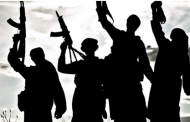
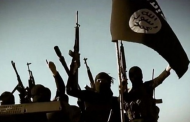
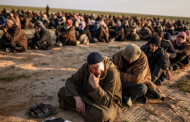
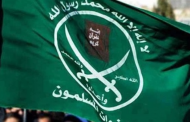
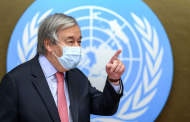
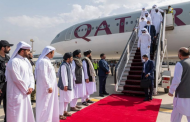
































admin in: How the Muslim Brotherhood betrayed Saudi Arabia?
Great article with insight ...
https://www.viagrapascherfr.com/achat-sildenafil-pfizer-tarif/ in: Cross-region cooperation between anti-terrorism agencies needed
Hello there, just became aware of your blog through Google, and found ...